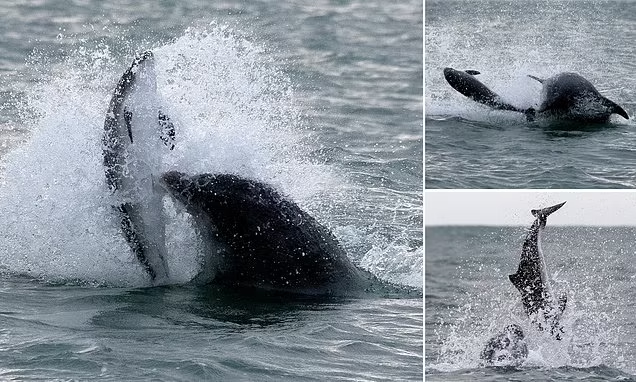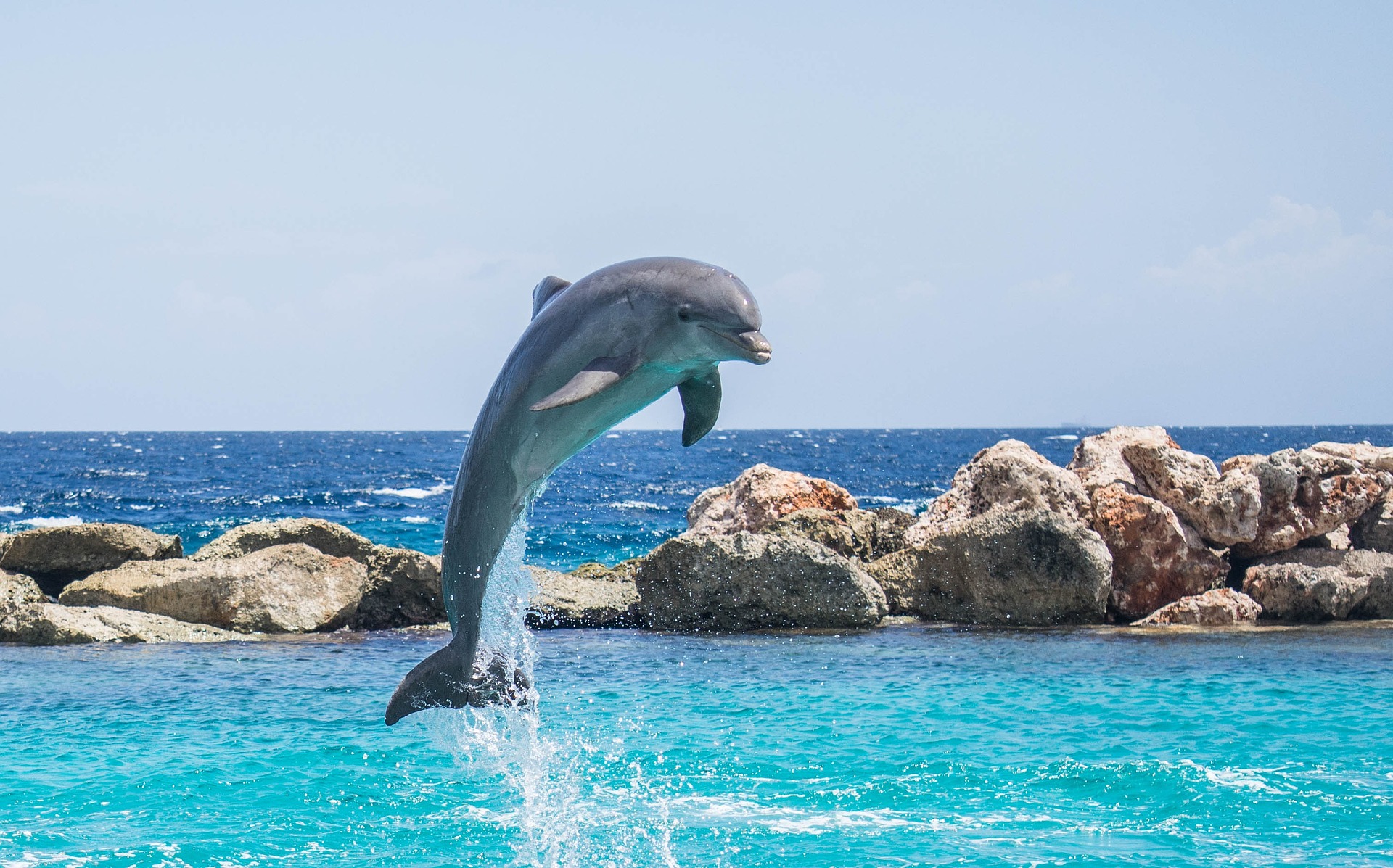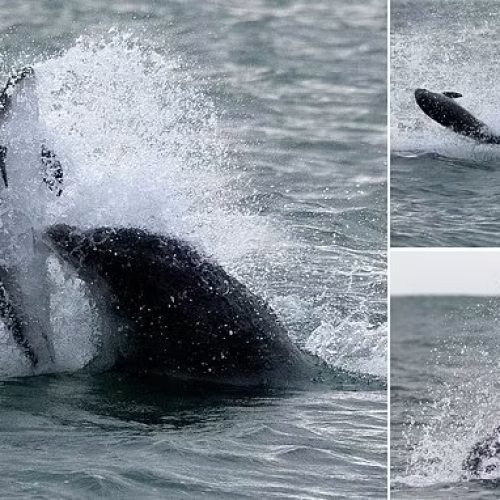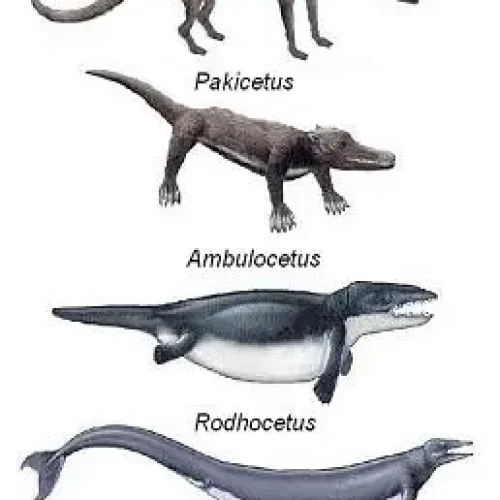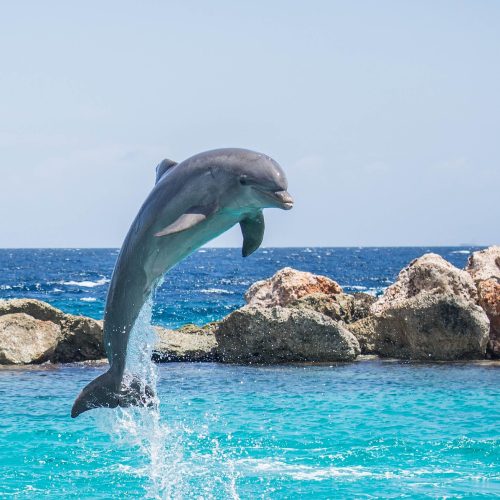Have you ever watched in awe as a pod of dolphins gracefully glides through the water, leaping and diving with incredible speed and precision?
These intelligent marine mammals have captivated humans for centuries, not only for their friendly demeanor but also for their remarkable athleticism.
In this article, we’ll explore the secrets behind dolphins’ incredible velocity and discover what makes them some of the most efficient and fast swimmers in the ocean.
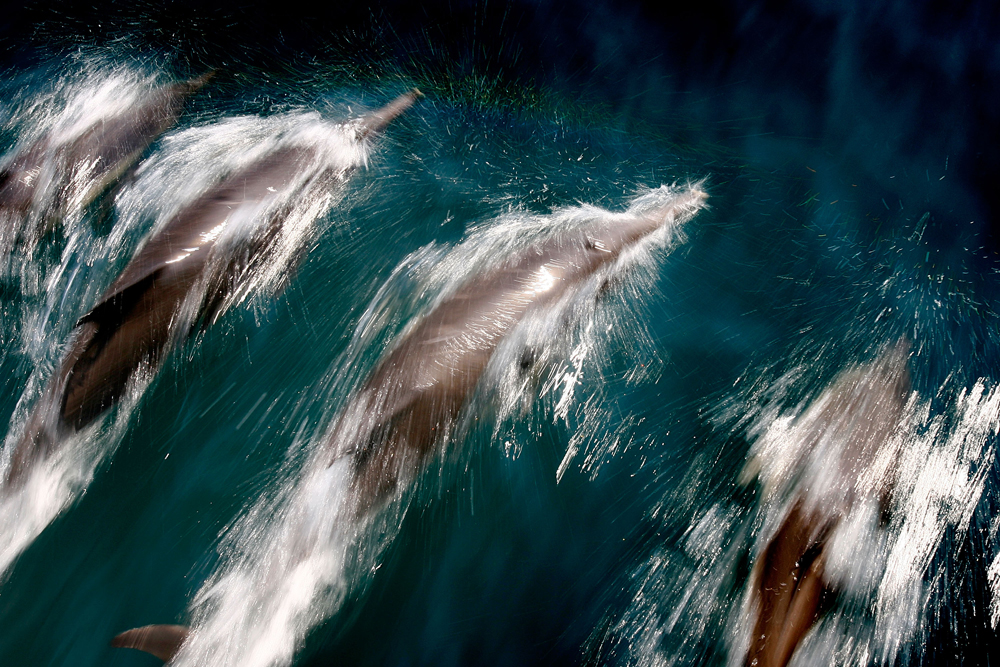
In this article
IMPRESSIVE SPEED AND AGILITY OF DOLPHINS
Dolphins are renowned for their incredible speed and agility in the water. These intelligent marine mammals have evolved to become some of the fastest swimmers in the ocean, thanks to their streamlined bodies and powerful muscles.
Different species of dolphins can reach impressive top speeds:
-Bottlenose dolphins: These well-known dolphins can swim at speeds of up to 30 km/h (18.6 mph), with short bursts of up to 45 km/h (28 mph).
-Orcas (killer whales): Despite their large size, orcas can reach speeds of up to 56 km/h (34.8 mph), making them one of the fastest marine mammals.
-Dall’s porpoises: These small, fast porpoises can reach speeds of up to 55 km/h (34.2 mph), earning them the nickname “the greyhounds of the sea.”
Dolphins are not the only fast swimmers in the ocean. Other marine animals known for their speed include:
-Sharks: Some species, like the shortfin mako shark, can reach speeds of up to 70 km/h (43.5 mph).
-Sailfish: These fish are considered the fastest in the ocean, with speeds of up to 110 km/h (68.4 mph).
-Marlin: Blue marlin can reach speeds of up to 80 km/h (49.7 mph), making them one of the fastest fish species.
While these animals may be faster than dolphins in short bursts, dolphins’ combination of speed and agility makes them unique among marine mammals.
YOU MAY ALSO LIKE – Size, shape, fins: the 5 major anatomical differences between dolphins and whales
ANATOMY: BUILT FOR SPEED
Dolphins’ impressive speed is due to their specialized anatomy, which has evolved to minimize drag and maximize efficiency in the water.
-Streamlined body shape: Dolphins have a fusiform body shape, which means they are tapered at both ends and have a rounded middle. This shape helps to reduce drag in the water, allowing them to swim faster and more efficiently. Their smooth, rubbery skin also contributes to their hydrodynamic efficiency.
-Powerful muscular system: Dolphins have strong, powerful muscles, particularly in their tail flukes. These flukes move up and down to propel the dolphin through the water, while the rest of the body remains relatively rigid. This efficient swimming motion, combined with their muscular strength, allows dolphins to maintain high speeds for extended periods.
-Dorsal fin and flippers: The dorsal fin and flippers play essential roles in a dolphin’s speed and agility. The dorsal fin helps to stabilize the dolphin as it swims, reducing side-to-side motion and improving overall efficiency. The flippers, located on either side of the body, are used for steering and making quick, agile turns.
In addition to aiding in swimming, the dorsal fin and flippers also help with thermoregulation. Blood vessels in these appendages can dilate or constrict to regulate body temperature, allowing dolphins to maintain their high metabolic rates necessary for fast swimming.
YOU MAY ALSO LIKE – How intelligent are dolphins?
SWIMMING TECHNIQUES AND ADAPTATIONS
- One of the most distinctive swimming techniques employed by dolphins is porpoising, which involves leaping out of the water in a series of arcs. By breaking the surface, dolphins can conserve energy and reduce water resistance, allowing them to maintain high speeds for longer periods. Porpoising also helps dolphins to breathe more efficiently, as they can take quick breaths during each leap.
- Dolphins are known to take advantage of the wake created by boats or ships, a behavior called drafting or bow-riding.By positioning themselves in the slipstream behind a moving vessel, dolphins can use less energy to maintain their speed, as they are essentially being pulled along by the boat’s momentum. This technique allows dolphins to travel long distances without expending as much energy as they would when swimming independently.
- Dolphins use echolocation, a form of biological sonar, to navigate through the water and detect obstacles or prey. By emitting high-frequency sounds and listening to the echoes, dolphins can create a detailed mental map of their surroundings. This adaptation enables them to move efficiently through the water, avoiding collisions and locating food sources with remarkable precision.
FACTORS AFFECTING DOLPHIN SPEED
While dolphins are generally fast swimmers, several factors can influence their speed and performance:
Age and size – Younger, smaller dolphins tend to be faster and more agile than their older, larger counterparts. As dolphins age and grow, they may prioritize endurance over speed, as they need to conserve energy for activities such as hunting, mating, and caring for their young.
Pod dynamics and social behavior – Dolphins often live in social groups called pods, and their swimming speed can be influenced by the dynamics within these groups. During coordinated hunting or foraging, dolphins may adjust their speed to match that of their pod mates, ensuring a successful outcome. In playful situations, dolphins may engage in chasing and racing, pushing their speed limits in friendly competition.
Environmental conditions – The speed of dolphins can also be affected by environmental factors such as water temperature, salinity, currents, and tides. Colder water temperatures can slow dolphins down, as they need to expend more energy to maintain their body heat. Strong currents or tides can either help or hinder a dolphin’s progress, depending on the direction of travel.
YOU MAY ALSO LIKE – Why is swimming with dolphins a unique, transformative experience?
COMPARING DOLPHIN SPEED TO HUMAN SWIMMERS
While dolphins are much faster than human swimmers, comparing their speeds can provide interesting insights into the differences between our species:
The fastest human swimmers can reach speeds of around 8-9 km/h (5-5.6 mph) over short distances, which is considerably slower than even the slowest dolphin species.
Dolphins’ streamlined bodies, powerful muscles, and specialized swimming techniques are the result of millions of years of evolution in the water. In contrast, humans are primarily land-based mammals who have adapted to swimming relatively recently in our evolutionary history.
By studying dolphin swimming techniques and adaptations, human swimmers and researchers can gain valuable insights into ways to improve our own swimming performance, such as reducing drag, increasing efficiency, and optimizing stroke techniques.
However, due to our fundamental physiological differences, humans will likely never match the incredible speed and agility of dolphins in the water.

